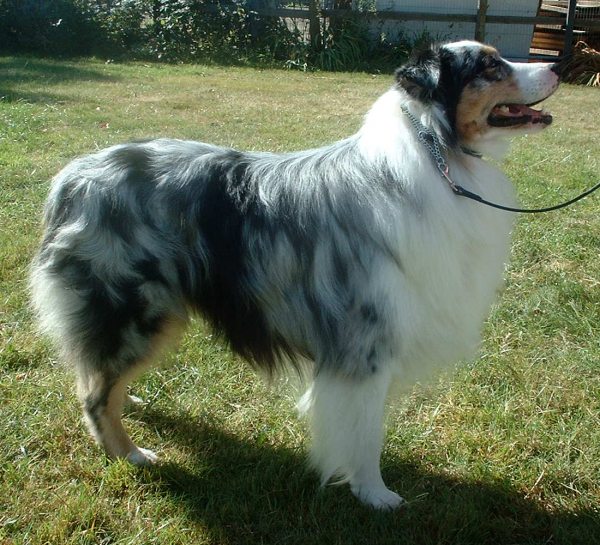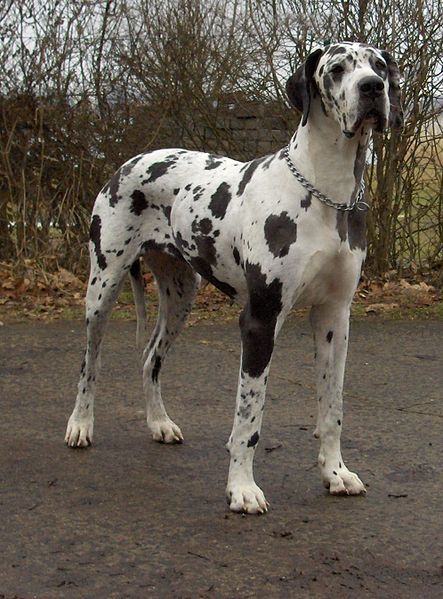Anyone who loves dogs will tell you that it doesn't matter what a pooch looks like on the outside. These beloved animals are so sweet and loving, most of us don't even pay attention to their appearance as they cover us in slobbery kisses or snuggle up to us on the couch. But even the most hard-core dog lovers have to admit that there are some pups that are so beautiful, they can make your jaw drop before you even get a chance to scratch them behind their ears and ask, "Who's a good boy?" However, many people don't know that a lot of the gorgeous coats you see on your favorite breeds have specific names and characteristics that go along with all that unique fur.
Dogs aren't the only animals that can have some seriously special coats. There are lots of beautiful horse breeds out there that have such dazzling colors, it's hard to believe that they're even real! A lot of the cool textures and colors we see on dogs are specific to certain breeds, and a few of them are caused by rare genetic mutations. But if you find yourself hoping for a dog with a one-of-a-kind look, make sure you find a good breeder — many uniquely colored dogs are born with or prone to developing health issues associated with their unique genes, just like these dog breeds that are more susceptible to certain medical problems than others.
Check out some of the super cool looks that these dog breeds have, and see if your dog's coat pattern is on the list! I once had a dog that was colored just like number 10, and I couldn't take him anywhere without people commenting on his fur!
Don't forget to SHARE these unique pooches with everyone you know!
1. Merle

Dogs who have a merle coat pattern have splotches of color on white fur. Dogs who have merle coats might also have different-colored eyes or noses. Merles are common in some breeds, such as collies, Australian shepherds, and Shetland sheepdogs, but there are also numerous health issues that can come with this beautiful coat pattern. Deafness and blindness are common in merles, and more health issues appear when two dogs with merle coats are bred together.
2. Brindle

Dogs aren't the only animals to display this subtly striped coat pattern. It's also been seen in guinea pigs and cattle, and there are even some cases of horses having brindle coats. In dogs, it's normally seen in breeds such as Great Danes and boxers, and the stripes are normally a few shades darker than the main coat color.
3. Albinism

Albinism can appear in just about any species, including humans, birds, and even snakes. It's characterized by the absence of melanin, which causes a complete lack of pigment in the skin and hair. Unfortunately, dogs who are born with this condition can also have certain health issues associated with albinism, including poor vision and susceptibility to sunburn.
4. Melanism

It might not be all that uncommon to see a black dog walking around, but it is pretty cool to see other species of canines, such as wolves, that have melanism. This characteristic is the opposite of albinism, and it causes the animal to have a completely black coat. It's been observed in other species as well, such as snakes and even flamingos.
5. Roan

Commonly seen in cattle dogs and spaniels, roan is similar to a merle coat pattern. The difference is that it appears in "flecks," while a merle coat is characterized by "splotches" of color. Sometimes, the flecks of color on a roan dog are so close together that the dog might appear to be a light red or light blue color, but other times, they are spaced far enough apart that the pup looks like it's covered in tiny spots.
6. Liver and Tan

Similar to the black and tan coats found on dogs like Rottweilers, liver and tan dogs are distinguished by their dark, almost dusty-brown coats and lighter brown "points" over their eyes and on their nose and feet. They often have light colored noses and golden eyes.
7. Harlequin

This unique pattern is only found in Great Danes. It's described as being "ripped" splotches of black on otherwise white fur. Other dogs, such as poodles, have been known to display similar coloring (known as "piebald"), but Harlequin patterns are actually caused by a completely different gene that can only be found in this giant dog breed.
8. Corded

This "dreadlock" look develops naturally in a few dog breeds, including Pulis and Komondors. They result from curly coats that never stop growing, and the trait is considered desirable in the breeds on which it appears.
9. Hairless

While some dogs have extremely unique coats, others don't have any hair at all. The Peruvian Inca Orchid is one of a few dog breeds that have either no fur or a few select tufts of hair on their head, tip of their tail, and feet. The Chinese Crested is a more well-known dog that displays hairlessness. These dogs are considered hypoallergenic thanks to their lack of dandruff, but they have special grooming requirements that need to be taken into consideration thanks to their unique condition.
10. Sable

This color was made famous by the heroic Lassie. It's found mainly in collies and Shetland sheepdogs, but can also be found in darker colors in breeds such as Pomeranians. Most dogs with sable coats have white on their chest, around their neck, on their feet and lower legs, their belly, and the tip of their tail. The rest of their coat is a light, reddish brown, and they normally have some black on places such as the tips of their ears.
11. Spotted

The coat color that Cruella De Ville was obsessed with is usually found in, yes, dalmatians. Spots can appear in any color, though black and brown are the most common. Mixed breeds have also been known to sport this delightful coat pattern.
12. Tri-Color

Described simply as a distinct combination of black, tan, and white, the tri-color pattern is a popular color for breeds such as collies, Shelties, and Papillons. The white portions of the coat appear in the same places you'd expect from a sable pattern, but rather than being predominantly light brown, the rest of the coat is black with light brown "points" over the eyes, around the muzzle, and on parts of the legs.
Make sure you SHARE these beautiful dogs with everyone you know!




